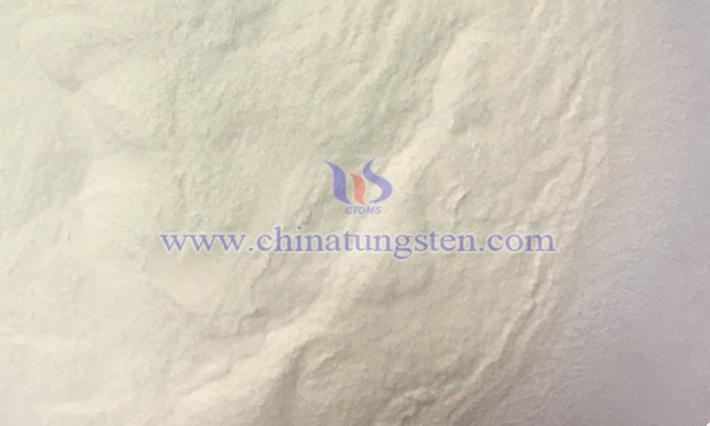What Is the Thermal Stability of Ammonium Metatungstate?
- Details
- Category: Tungsten Information
- Published on Wednesday, 28 May 2025 16:01
Ammonium Metatungstate (AMT) is a white crystalline powder that is easily soluble in water but insoluble in alcohol. It serves as a key precursor in the preparation of tungsten powder, tungstates, and catalysts, and is widely used in electronics, catalysis, and functional materials.

The thermal stability of ammonium metatungstate refers to its ability to maintain chemical structure and properties under heat. Its decomposition occurs in stages: at lower temperatures, it loses crystal water; at medium to high temperatures, it decomposes and releases ammonia; and finally, it transforms into tungsten trioxide (WO₃). Its performance is influenced by factors such as purity and particle size. AMT should be stored in a dry environment to prevent decomposition.
The thermal decomposition process of AMT is progressive. At low temperatures, it undergoes dehydration, losing its crystal water to form an anhydrous salt—this is a physical change that retains the chemical structure. As the temperature rises to a medium range, decomposition begins: ammonium ions break down, releasing ammonia and water vapor, forming intermediate products. At high temperatures, these intermediates further decompose, ultimately converting fully to tungsten trioxide (WO₃), representing an irreversible chemical change and complete breakdown of the AMT structure.
Thermal stability testing of AMT relies mainly on thermal analysis techniques:
Thermogravimetric Analysis (TGA) tracks mass changes in real time during heating to determine dehydration and decomposition temperatures and weight loss percentages.
Differential Scanning Calorimetry (DSC) measures heat flow differences between the sample and a reference, identifying phase transitions and thermal effects such as endothermic or exothermic peaks.
X-ray Diffraction (XRD) characterizes phase changes in decomposition products at different temperatures, confirming structural transformations.
Hot-stage Microscopy observes morphological changes upon heating, aiding in thermal stability assessment.

Several factors influence the thermal stability of AMT:
Purity and crystal water content: Higher purity and stable water content result in more consistent decomposition temperature ranges and better stability. Impurities such as metal ions and free acids lower the decomposition temperature and accelerate decomposition.
Atmospheric conditions: Decomposition temperatures are slightly higher in inert atmospheres (e.g., nitrogen) than in air, as oxygen promotes oxidation of intermediates. Conversely, mildly acidic atmospheres (e.g., trace nitric acid) may suppress ammonium ion decomposition and enhance thermal stability.
Particle size and specific surface area: Smaller particle sizes and higher specific surface areas increase surface activity, accelerating the rate of thermal decomposition.
- Chinatungsten Online: ammonium-metatungstate.com
- CTIA GROUP LTD: en.ctia.group
- Tungsten News & Price: www.ctia.com.cn
- Molybdenum News & Price: news.molybdenum.com.cn
- Tel.: 86 592 5129696; Email: sales@chinatungsten.com